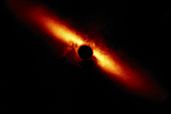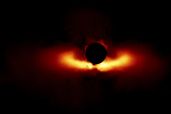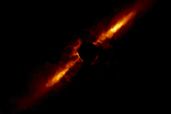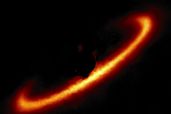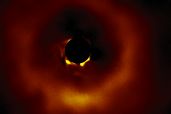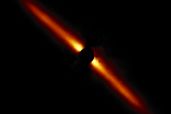Researchers from the University of California Berkeley and other organizations including the SETI Institute released the largest collection of images showing debris discs around young stars, providing a glimpse of what our solar system might have looked like when its planets were forming. The images were part of data collected over four years by the Gemini Planet Imager (GPI), located on the Gemini South Telescope in Chile.
Like the icy debris the Kuiper Belt on the outer edge of our solar system, the images show 26 Kuiper Belt analogs, seven of which were previously unknown. One hundred four stars were observed, with 75 having no disk that GPI could detect.
“One of the things we found is that these so-called disks are really rings with inner clearings,” said lead author of the paper describing the results in the Astronomical Journal, Thomas Esposito, who is a researcher at the SETI Institute in Mountain View, California. “GPI had a clear view of the inner regions close to the star, whereas in the past, observations by the Hubble Space Telescope and older instruments from the ground couldn't see close enough to the star to see the hole around it."
“If you dial back the clock for our own solar system by 4.5 billion years, which one of these disks were we? Were we a narrow ring, or were we a fuzzy blob?” Esposito said. “It would be great to know what we looked like back then to understand our own origins. That is the great unanswered question."
Video: Images of Dusty Star Systems Revealed by the Gemini Planet Imager
One of the co-authors, Franck Marchis, Senior Planetary Astronomer at the SETI Institute, reflected on the end of the 4-year Gemini Planet Imager Exoplanet Survey (GPIES). “ More than 100 scientists, worked for almost two decades on this project from instrument development to publication of the scientific results like this one. Several graduate students who started the Ph.D. on this project are now researchers or professors at research institutes across the world. GPIES has created a strong generation of exoplanetary astronomers to work on future projects like GPI2.0 in Hawaii, but also ambitious space telescopes like Project Blue, the Nancy Grace Roman Space Telescope, and the future LUVOIR/HabEx space telescopes. It's very likely that one of these telescopes will one day photograph another Pale Blue Dot, an Earth-like exoplanet, and that's the true legacy of GPI Exoplanet survey.”
In addition to Esposito and Marchis, two additional SETI Institute scientists were among the GPIES researchers, Paul Kalas and Eric Nielsen.
The full press release detailing the results of the research can be found here.
The paper in the Astronomical Journal, Debris Disk Results from the Gemini Planet Imager Exoplanet Survey's Polarimetric Imaging Campaign, can be found here.
Read Gemini Observatory's press release here.
Click here to view our SETI Live video with Thomas Esposito and Simon Steel, Gemini Planet Imager and the Search for Young Worlds.


